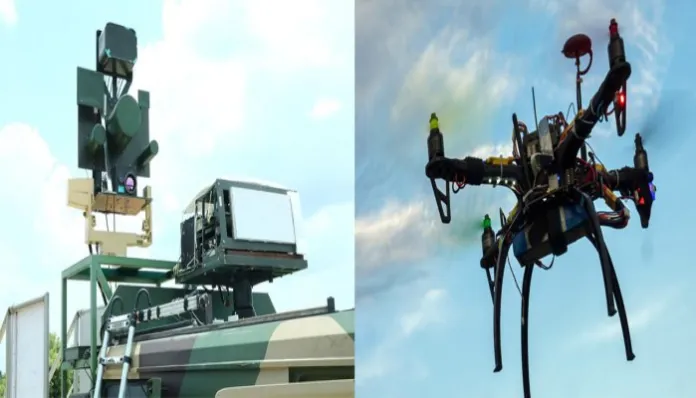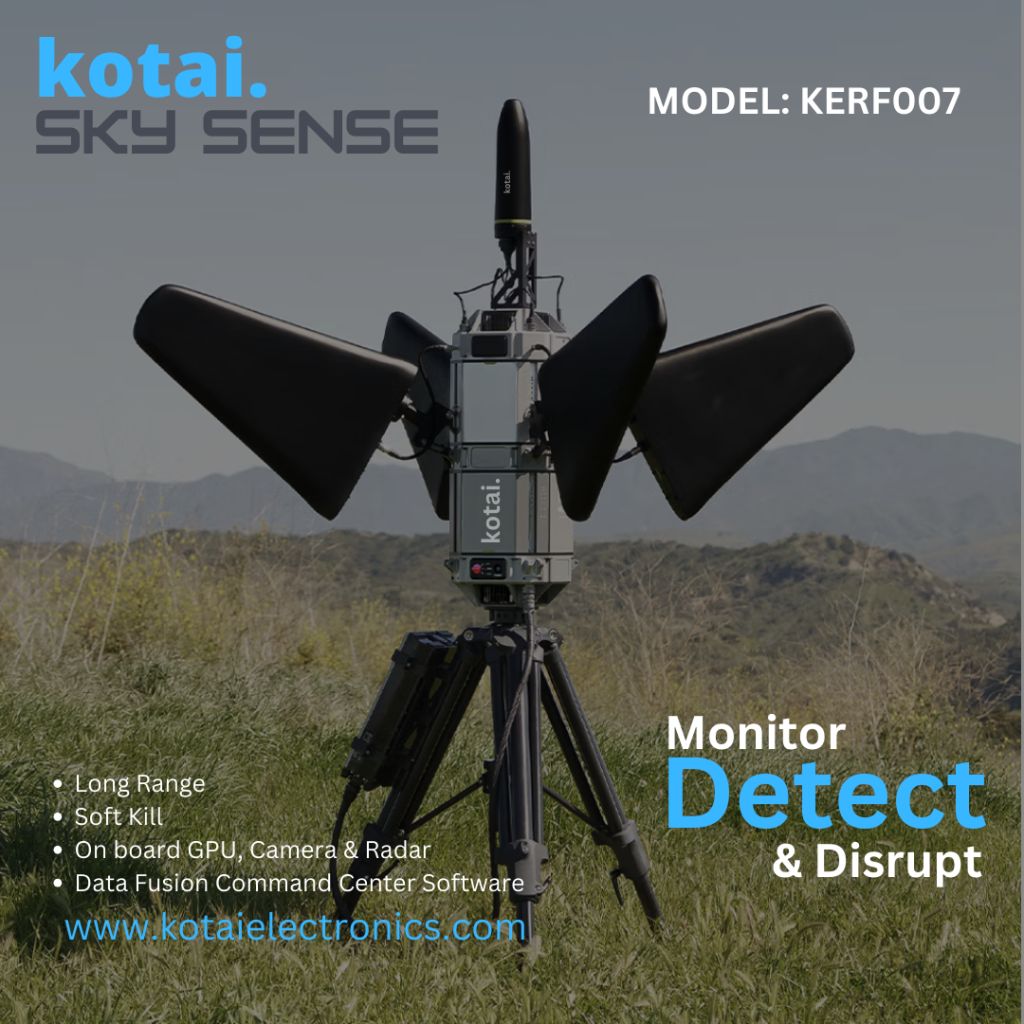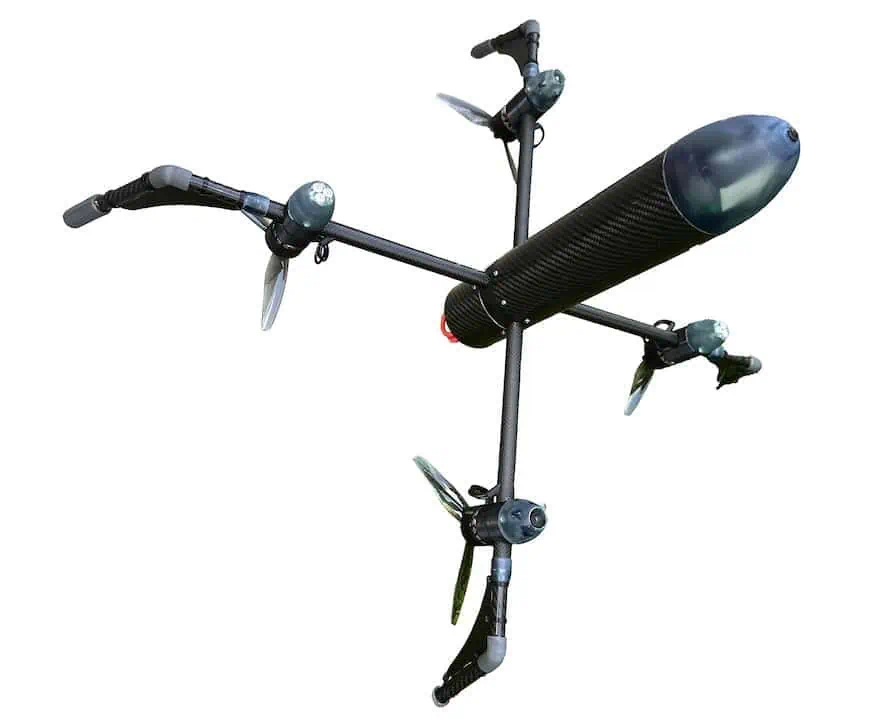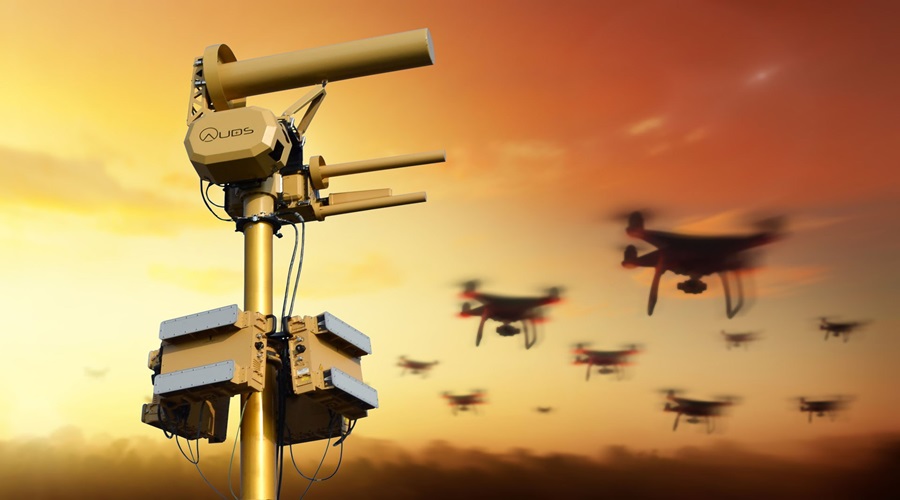Anti Drone System Manufacturers in India. Using Domestic CUAS Technology to Secure the Airspace
Drones have a greater potential for misconduct as they become more widely available and adaptable. Rogue drones have posed major concerns to public safety, national security, and vital infrastructure, ranging from illegal surveillance to smuggling and possible terrorist threats. Anti-drone systems, sometimes referred to as Counter-Unmanned Aircraft Systems (CUAS), are becoming essential to addressing these issues. This blog will look at the major players in the quickly expanding Indian market for anti-drone system makers as well as the strategy and advancements influencing the country’s CUAS system market.
Table of Contents
Introduction to Anti Drone Systems
Unwanted or illegal drones are intended to be detected, tracked, and destroyed by an anti-drone system, also known as a CUAS (Counter-Unmanned Aircraft System). These systems make use of technologies such as energetic detectors, radar, auditory sensors, radio frequency (RF) detection, and jammers.
Developing and implementing strong CUAS systems in India is not simply a safety measure but also a need in a nation like India that faces both internal and foreign security threats.

Why India Needs CUAS Technology
Illegal drones have been involved in several instances in India. The threat landscape is changing, ranging from drones used for spying on sensitive locations to drones used for cross-border drone-based smuggling. The necessity for dependable anti-drone systems has increased due to recent events like attack across the Line of Control (LoC) and drone strikes on Indian Air Force sites.
Factors driving demand:
- Border security
- Protection of critical infrastructure
- Airspace safety in urban areas
- Event and VIP security
- Industrial surveillance and facility protection
Key Components of an Anti Drone System
An effective anti drone system comprises the following elements:
a) Detection
- RF Sensors: Detect drone control signals.
- Radar: Identifies small flying objects.
- Optical & Thermal Cameras: Visual confirmation.
- Acoustic Sensors: Analyze drone-specific sound patterns.
b) Tracking
- Real-time tracking through integrated systems and mapping.
c) Neutralization
- RF Jamming: Disrupts communication between the drone and operator.
- GPS Spoofing: Misleads drone navigation.
- Net Guns & Interceptor Drones: Physically capture or destroy the drone.
- Directed Energy Weapons: Lasers or high-powered microwaves.
CUAS System India: Policy and Regulatory Framework
The Indian government has recognized the rising threat from rogue drones and formulated a comprehensive policy framework.
Key policies:
- Unmanned Aircraft System Rules, 2021
- Drone (Amendment) Rules, 2022
- DGCA’s No Permission No Takeoff (NPNT) rule
- MoD guidelines for procurement of indigenous defense systems
These frameworks provide opportunities for anti drone system manufacturers in India to innovate and cater to the growing defense and civilian markets.
Top Anti Drone System Manufacturers in India
India is now home to several cutting-edge anti drone system manufacturers offering indigenous CUAS solutions.
a) Bharat Electronics Limited (BEL)
One of the most reputable brands in India’s military industry is BEL. Its anti-drone technology uses a combination of jammer, radar, and radio frequency technologies to detect, track, and destroy drones. Defense installations are among the strategic sites where BEL’s technology has been installed.
Features:
- 360° coverage
- Simultaneous tracking of multiple targets
- Integration with command and control centers
Kotai Electronics Pvt. Ltd
Kotai Electronics Pvt. Ltd, in Kolkata, is an emerging name in the Indian defense technology space, offering advanced and customizable anti drone systems. The company specializes in developing indigenous CUAS solutions tailored for both military and civilian applications.

Their systems integrate radar, RF detection, and jamming capabilities to effectively detect and neutralize unauthorized drones. Kotai Electronics emphasizes modularity and field deployability, making their CUAS systems suitable for mobile, fixed, and urban deployment scenarios.
Key Features:
- Multi-layer drone detection using radar and RF sensors
- Electromagnetic and GNSS jamming capabilities
- Real-time threat visualization through integrated dashboard
- Rapid deployment kits for event and perimeter security
- AI-powered drone classification and automated response features
Kotai Electronics is gaining traction for its cost-effective and scalable solutions, particularly in homeland security, smart city surveillance, and infrastructure protection projects.
3. Gurutvaa Systems
Gurutvaa Systems, based in Bengaluru, offers modular CUAS platforms for both fixed and mobile deployment. Their CUAS system India solutions include radar, EO/IR sensors, and RF jammers. They serve defense, law enforcement, and industrial clients.
Key offerings:
- Portable anti drone guns
- Rapid deployment CUAS units
- AI-enabled threat classification
4. Big Bang Boom Solutions
A startup funded under the iDEX (Innovations for Defence Excellence) initiative, Big Bang Boom Solutions focuses on AI-powered CUAS technology. Their systems are designed for rugged use in field conditions, offering high mobility and plug-and-play features.
Highlights:
- Machine learning-powered drone detection
- Interoperability with other defense platforms
5. Zen Technologies
With a long history in defense simulation and training systems, Zen Technologies has expanded into anti drone systems. Their CUAS offerings are tailored for both military and civilian markets.
Strengths:
- Customizable modules
- Real-time analytics and control
- Integration with surveillance systems
6. Defsys Solutions
Based in Gurugram, Defsys offers a wide range of defense solutions, including CUAS technologies. Their anti drone systems include long-range radar, RF analyzers, and signal jamming units.
Advantages:
- Seamless command center integration
- Military-grade performance
- Export-ready systems
7. IdeaForge
Known for manufacturing drones, IdeaForge also offers anti drone technologies, especially geared towards homeland security. Their CUAS systems integrate with existing surveillance platforms for enhanced situational awareness.
Features:
- RF-based drone detection
- Interceptor drone technology
- Low-latency tracking
8. NewSpace Research & Technologies
A cutting-edge aerospace startup, NewSpace develops swarming drone tech and CUAS solutions. Their anti drone platforms are integrated with AI and real-time threat response capabilities.
Key offerings:
- High-speed interceptor drones
- Smart jamming systems
- Airspace management software
Technology Trends in Indian CUAS Market
The CUAS system India market is evolving rapidly with advancements in AI, automation, and miniaturization.
a) AI-Powered Detection
Machine learning algorithms help distinguish drones from birds, aircraft, and other objects.
b) Integration with 5G and IoT
CUAS platforms are integrating with smart city infrastructure to offer real-time alerts and automated threat responses.
c) Autonomous Interceptor Drones
Interceptor drones capable of autonomously hunting and disabling threats.
d) Directed Energy Weapons
BEL and DRDO are working on laser-based anti drone systems to offer precise, non-collateral damage solutions.

Challenges Faced by Anti Drone System Manufacturers in India
Despite the progress, anti drone system manufacturers in India face several hurdles:
- High R&D Costs: Developing advanced CUAS systems is capital intensive.
- Complex Regulations: Multiple approvals from DGCA, MoD, and other bodies slow down deployment.
- Limited Testing Grounds: Lack of real-world testing environments hampers performance validation.
- Import Dependency: Some critical components still need to be imported, impacting cost and reliability.
Government Initiatives and Defense Contracts
The government of India is actively encouraging domestic military manufacture through the Atmanirbhar Bharat and Make in India programs. Several contracts for the development and implementation of CUAS systems have been given to Indian entrepreneurs and public sector organizations by the Ministry of Defence (MoD) and DRDO.
Key Milestones:
- BEL’s anti drone system deployed at Republic Day 2022 celebrations.
- DRDO-developed CUAS systems showcased in defense expos.
- MoD iDEX funding awarded to CUAS startups.
Future Outlook of CUAS System India
Over the next five years, the CUAS system market in India is anticipated to expand at a compound annual growth rate (CAGR) of more than 20%. Demand for anti-drone systems will rise due to an increase in drone violations and a growing requirement for airspace security.
- Smart cities
- Airports
- Defense bases
- Oil and gas infrastructure
- Religious and public events
The future will also witness the emergence of hybrid CUAS solutions combining kinetic and non-kinetic countermeasures, powered by AI and real-time data analytics.
Conclusion
Drones are revolutionizing entertainment, logistics, and surveillance, but when used improperly, they may also be extremely dangerous. In response, Indian producers of anti-drone systems are stepping up to the plate by creating CUAS systems that are creative, affordable, and scalable in order to meet the country’s various security requirements.
India is well on its way to being a global center for CUAS system India solutions thanks to government assistance, technological advancement, and growing awareness. In the upcoming years, the importance of domestic anti-drone systems will only increase, whether it is for border security, critical infrastructure protection, or urban airspace security.

